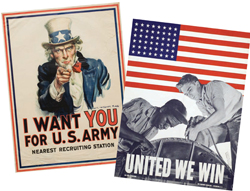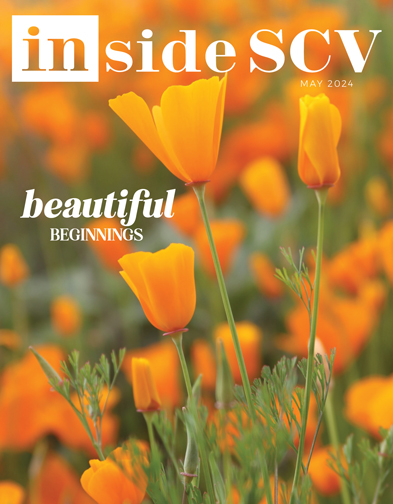EAT, DRINK & PLAY - GET OUT OF TOWN
Get Out of Town!
"I Want You" to See this Exhibit
November, 2008 - Issue #49
 "I Want You for U.S. Army" by James Montgomery Flagg and "United We Win" by Alexander Liberman |
"The Art of War: American Posters from World War I and World War II" presents some of the finest examples of propaganda produced by our government and the leading artists of the respective time periods.
The 33 posters are categorized into four themes: production, conservation, economic sacrifice and general patriotism. They open a unique window into the nation's state of mind during previous wars, and hint at what life was like for those who remained here on the home front.
As we square off like squabbling children into Red States and Blue States and debate troop withdrawal timetables, the exhibit serves as a subtle, fatherly reminder from earlier generations that in equally-threatening eras our nation banded together with a clear sense of purpose to make individual sacrifices in support of a common cause.
The gravity and sincerity of the messages is jarring when compared with what we've been asked to do to fight the War on Terror - buy SUVs and spend our tax rebates to keep America rolling. Oh, and limit liquids in our carry-on luggage to 3 ounces or less.
The creators of the posters envisioned a role for everyone to play in securing victory, regardless of age, race or gender. Accordingly, the messages to enlist, curtail travel, buy war bonds, work in factories, and even save cooking fats for use in manufacturing explosives targeted every segment of the population.
Kids were expected to share the load by altering their diets. A poster from World War I entitled "Little Americans Do Your Bit" bears a smiling, saluting rosy-cheeked boy and exhorts children to "save the wheat for our soldiers" by eating corn.
The most recognizable image - and among the most powerful - is that of James Montgomery Flagg's iconic 1917 caricature of a pointing Uncle Sam saying, "I Want You." Fittingly, it is placed at the entrance to the exhibit and will no doubt compel visitors to step into the gallery.
More than a call to action, the posters reminded earlier generations what was at stake in fighting the wars. John Philip Falter's "This World Cannot Exist Half Slave and Half Free - Fight for Freedom!" depicts a family cowering in fear while a dark shadow outlines a man wielding a whip.
The two devastating World Wars are a dim reality for most people today and I suspect many museum-goers will have a hard time connecting with the exhibit.
Yes, the posters do evoke the disparaging stereotypes so commonly used to depict our former enemies. But that is one of the most compelling reasons to see the exhibit. It reminds us of the peace and mutually-beneficial prosperity that the former enemies cultivated after the horrors of World War II.
And, decades later, the posters still point us to the essence of America and the spirit that has enabled our nation to persevere in times of crisis. A poster created by Alexander Liberman in 1943 - when battles raged in Europe and the Pacific, and no one knew how long World War II would last - depicts a bold American flag behind two factory workers bent over their task. One is black; the other white. The caption boldly proclaims "United We Win."
Let's bear that in mind as the partisan hyperbole kicks into high gear, the bullets keep flying in Baghdad, and "our soldiers" continue fighting in Kabul.
Eric Harnish is a professional writer who lives in Newhall.
"The Art of War: American Posters from World War I and World War II"
Runs through January 26, 2009
Norton Simon Museum
411 West Colorado Boulevard, Pasadena 626-449-6840
Admission is $8, or free from 6 p.m. to 9 p.m. on the first Friday of the month.
Getting there: Take Interstate 5 south to Interstate 210 east. Exit at Colorado Boulevard. Turn right on Maple Street, which becomes St. John Avenue. Turn right on Colorado Boulevard. Free parking is available at the museum.
|
||||||||||||||||||||||||||||




